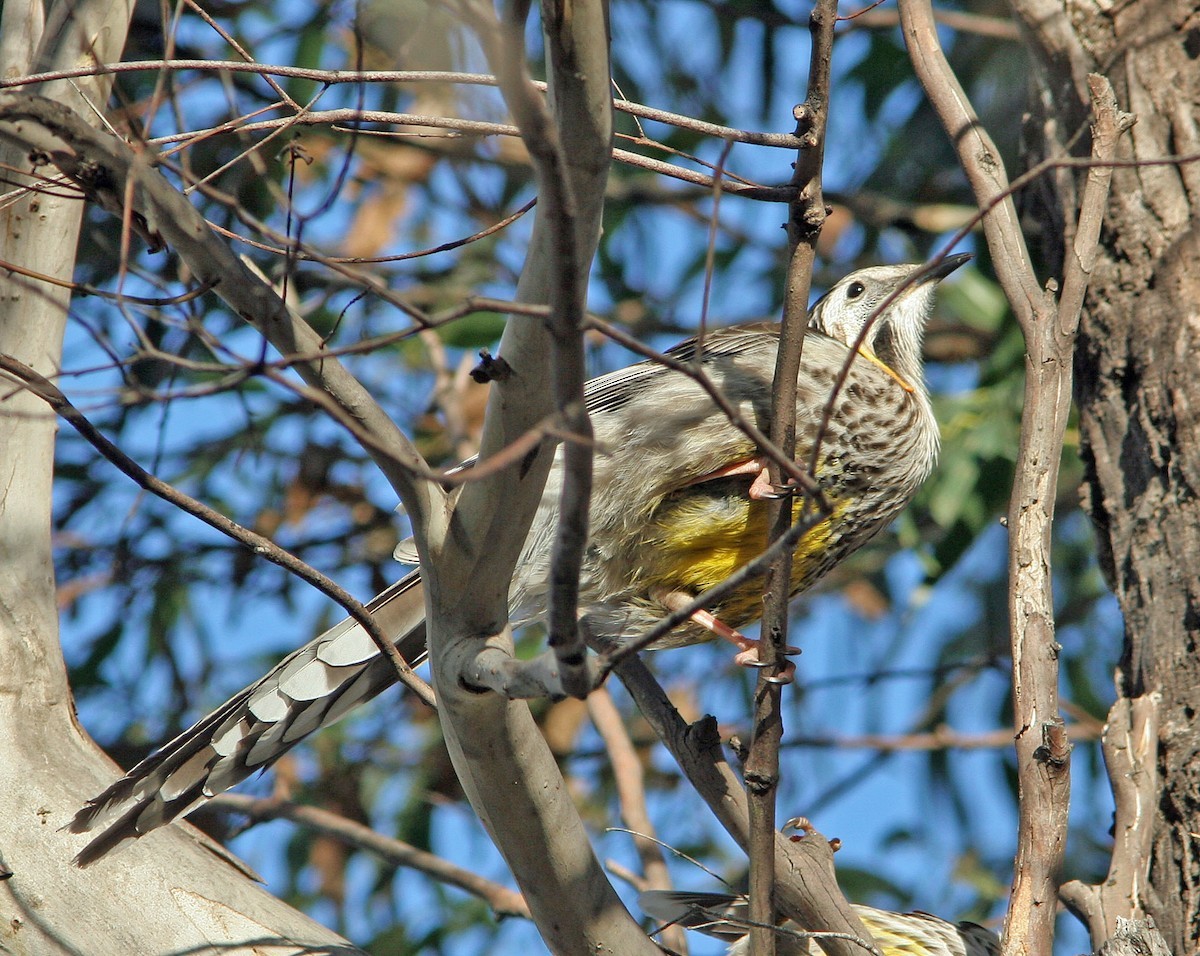Yellow Wattlebird
A species of Wattlebirds Scientific name : Anthochaera paradoxa Genus : Wattlebirds
Yellow Wattlebird, A species of Wattlebirds
Botanical name: Anthochaera paradoxa
Genus: Wattlebirds
Content
Description General Info
 Photo By Don Roberson
Photo By Don Roberson Description
The yellow wattlebird is the largest of the honeyeaters, and is endemic to Tasmania. They are usually 37.5–45 centimetres (14.8–17.7 in) long. They are named for the wattles hanging from the cheeks. Yellow wattlebirds are slim birds with a short, strong bill. They have a white face and black-streaked crown. They also have a long, pendulous yellow-orange wattle. The wattle becomes brighter during the breeding season. They have dark wings and a yellow belly, whereas the upperparts are grey to dusky brown. The female yellow wattlebird is much smaller than the male. The young yellow wattlebirds have much smaller wattles, a paler head, and a browner underbelly than the adult birds. The yellow wattlebird is similar in appearance to the little wattlebird and the red wattlebird. 
Size
37 - 50 cm
Nest Placement
Tree
Feeding Habits
Yellow Wattlebird's diet mainly consists of nectar, particularly from Eucalyptus and Banksia, as well as arthropods and fruit. They forage from the canopy to the ground, often probing flowers and foliage, gleaning invertebrates, or sallying for insects. Unique in feeding behavior, they also feed at sap-flows and strip bark for food, showing adaptability by feeding in gardens and orchards as well. Typically found alone or in flocks, they can be both active and aggressive.
Habitat
Yellow Wattlebird resides in Eucalyptus-rich sclerophyll forests and woodlands, favoring areas with mature vegetation, and a grassy or sedgy understorey. They are also common in wet sclerophyll forests with tall Eucalypts and diverse understorey, open woodlands with heathy plants, and subalpine forests. Though rarer, they occupy urban green spaces and sometimes heathlands or shrublands, avoiding higher elevations.
Dite type
Nectivorous
General Info
Feeding Habits
Bird food type
Behavior
Yellow wattlebirds are active and acrobatic with a strong flight. They are fairly tame birds and often enter gardens looking for food. Harsh, raucous and grating, their calls have often been compared to a person coughing or belching, with a gurgling growk or repeated clok sound Yellow wattlebirds feed on the nectar of eucalypts and banksias, fruit, insects, spiders, honeydew,honey bees on the flight and manna (crystallised plant sap). They forage at all levels from the ground to the canopy. However, the blossoming of eucalyptus trees can be highly irregular in time and place, causing considerable changes from year to year in the breeding distribution of yellow wattlebirds, which rely on their nectar as a main source of food. Therefore, the most likely threat to the yellow wattlebird is unusual climatic conditions that can reduce food availability suddenly. Yellow wattlebirds can pollinate eucalyptus trees by carrying pollen in their bills or on the feathers of their heads. 
Distribution Area
Yellow wattlebirds are common in Tasmania, especially in the eastern and central areas. They are uncommon on King Island, and two possible sightings recorded on the southern Mornington Peninsula in Victoria lack material evidence. Yellow wattlebirds live in a variety of habitats including both dry and wet forests, and from sea level to the subalpine zone. They live in coastal heaths, forests and gardens near Eucalyptus trees. They also can be found in mountain shrubberies and open woodlands, particularly those dominated by Banksia. They have also been known to occur on golf courses, and in orchards, parks and gardens. 

 Photo By Don Roberson
Photo By Don Roberson Scientific Classification
Phylum
Chordates Class
Birds Order
Perching birds Family
Honeyeaters Genus
Wattlebirds Species
Yellow Wattlebird